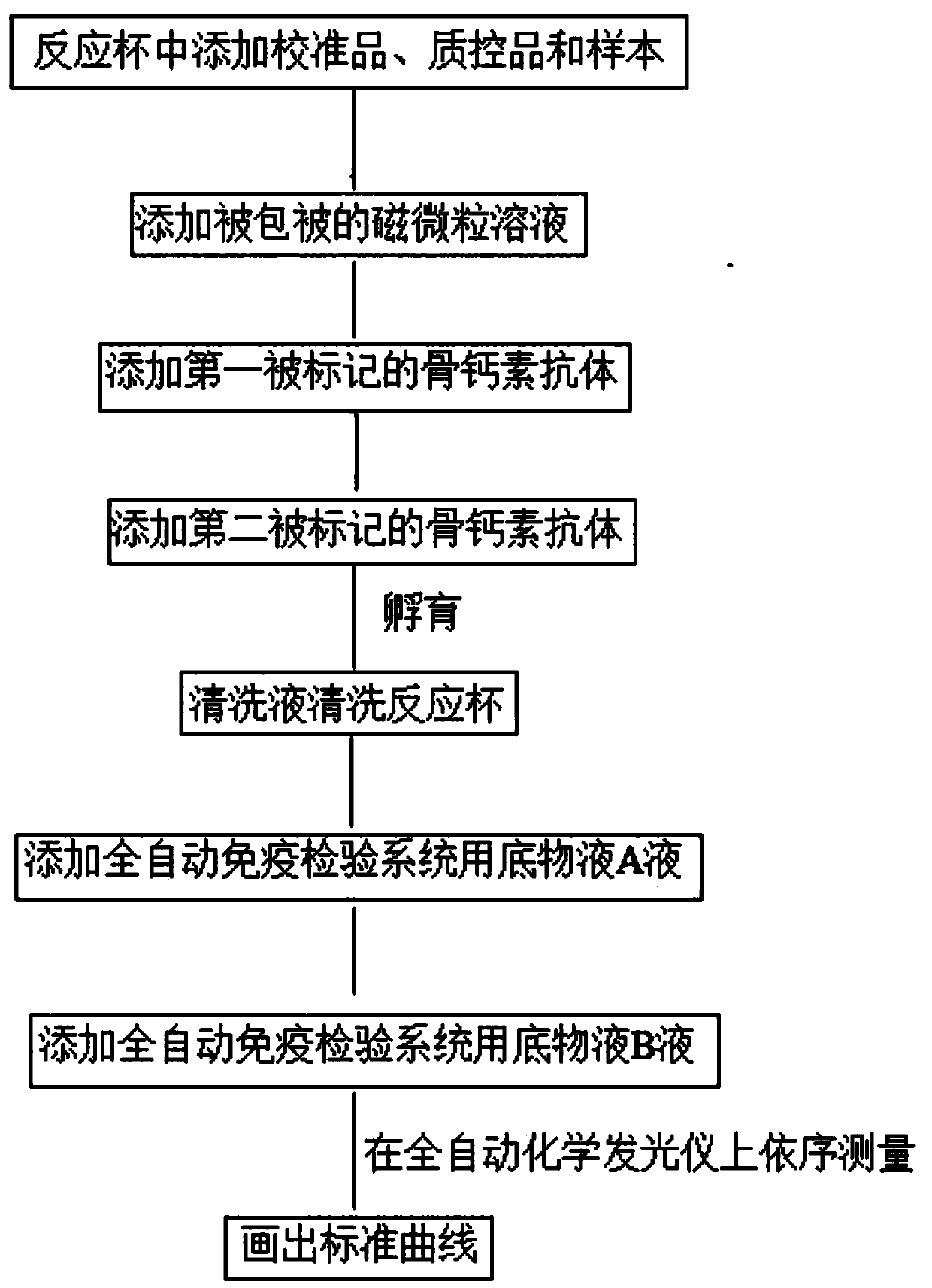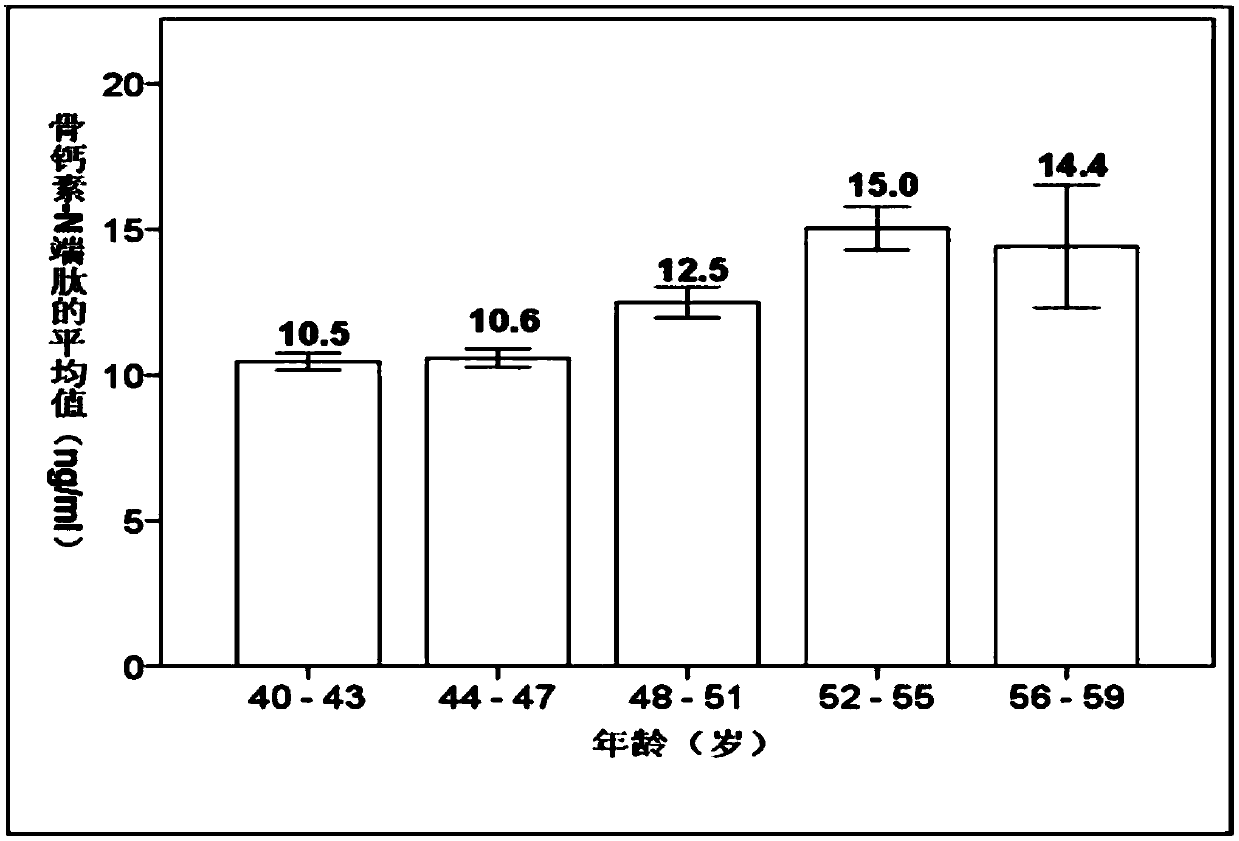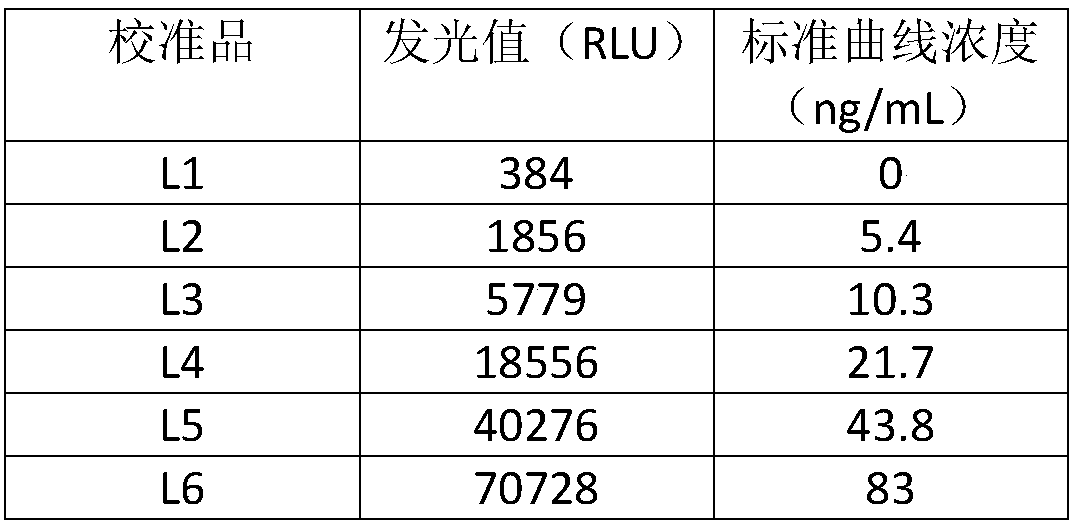Osteocalcin-N terminal peptide detecting reagent, detection method and application thereof
A technology for detecting reagents and osteocalcin, applied in biological testing, material inspection products, etc., can solve problems such as inability to measure osteocalcin content, little significance, and decreased detection concentration of osteocalcin
- Summary
- Abstract
- Description
- Claims
- Application Information
AI Technical Summary
Problems solved by technology
Method used
Image
Examples
Embodiment Construction
[0126] The present invention will be specifically introduced below in conjunction with the accompanying drawings and specific embodiments.
[0127] A reagent for detecting osteocalcin-N-terminal peptide, comprising: an immune complex and an antibody detection system;
[0128] The immune complex is composed of the labeled first specific antibody, the labeled second specific antibody, the osteocalcin calibrator, the bone calcium quality control substance, and the sample to be tested to form the first labeled specific antibody—osteocalcin-N telopeptide - labeled second specific antibody;
[0129] The first specific antibody and the second specific antibody are composed of an antibody that specifically binds to the epitope of the amino acid in the amino acid sequence of the osteocalcin-N-terminal peptide, and another antibody that binds specifically to the amino acid in the amino acid sequence of the osteocalcin-N-terminal peptide. Amino acid epitope-specific binding, the three p...
PUM
 Login to View More
Login to View More Abstract
Description
Claims
Application Information
 Login to View More
Login to View More - R&D
- Intellectual Property
- Life Sciences
- Materials
- Tech Scout
- Unparalleled Data Quality
- Higher Quality Content
- 60% Fewer Hallucinations
Browse by: Latest US Patents, China's latest patents, Technical Efficacy Thesaurus, Application Domain, Technology Topic, Popular Technical Reports.
© 2025 PatSnap. All rights reserved.Legal|Privacy policy|Modern Slavery Act Transparency Statement|Sitemap|About US| Contact US: help@patsnap.com



